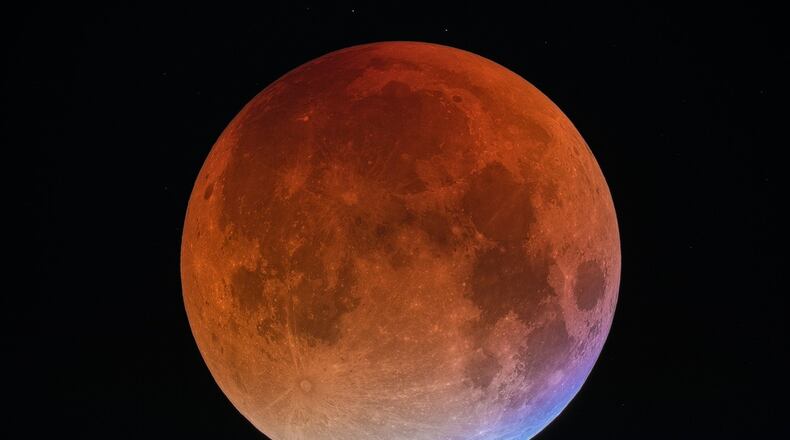Unlike with solar eclipses, you need no special equipment to observe lunar eclipses. You get a lunar eclipse when the moon passes into Earth’s shadow. When this happens, the moon turns deep red or reddish brown instead of going completely dark. That’s because some of the sunlight going through Earth’s atmosphere is bent around the edge of our planet and falls onto the moon’s surface. Earth’s air also scatters more of the shorter-wavelength light (in colors such as green or blue); what’s left is the longer-wavelength, redder end of the spectrum. It is sometimes said a blood moon is colored the way it is because of all the sunrises and sunsets being reflected by the moon.
TRENDING: Kate Hasting to go through with show at Clark Co. Fair after father’s death
On the night of July 27th, the total phase of the “blood moon” eclipse of July 27 will last 1 hour and 43 minutes, during which Earth’s natural satellite will turn a spectacular red or ruddy-brown color. From start to finish, the entire celestial event will last nearly 4 hours. If you want to see it, you’ll have to book your trip fast to the Eastern Hemisphere! The entire eclipse will be visible from Africa, the Middle East and countries in central Asia. The eclipse will be visible from eastern South America as it is ending, and from Australia as it is beginning.
So, what about here in Ohio? When will our next eclipse occur? The next total lunar eclipse visible from North America will occur on the night of January 20th, 2019. Totality on that day will last 1 hour and 2 minutes. Set your calendars and clocks as the total lunar eclipse will begin at 11:41pm on that Sunday night here in the Miami Valley, and end at 12:43 early Monday morning. That year will also see a partial eclipse, on July 16, 2019. If you are curious when to expect the next total solar eclipse that will be visible in the Miami Valley, you don’t have to wait too terribly long. Just be sure you schedule some time around midafternoon of Monday, April 8th, 2024. It should be quite a show. If you are hoping to see this month’s total lunar eclipse but can’t quite afford a trip to Africa or Asia, you can watch live web streams of the event on NASA’s website. Of course, seeing anything will be high dependent on the weather, so I guess I have some work to do!
About the Author
